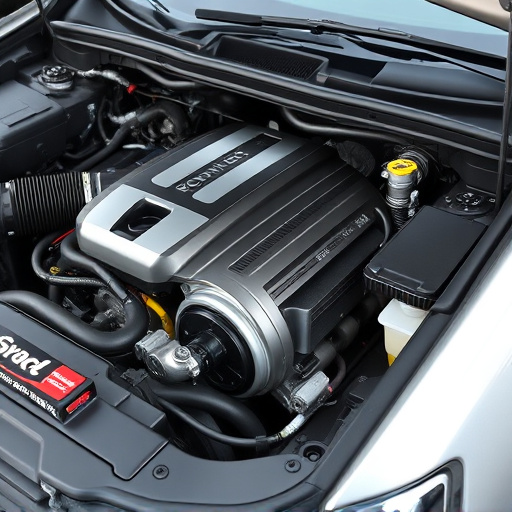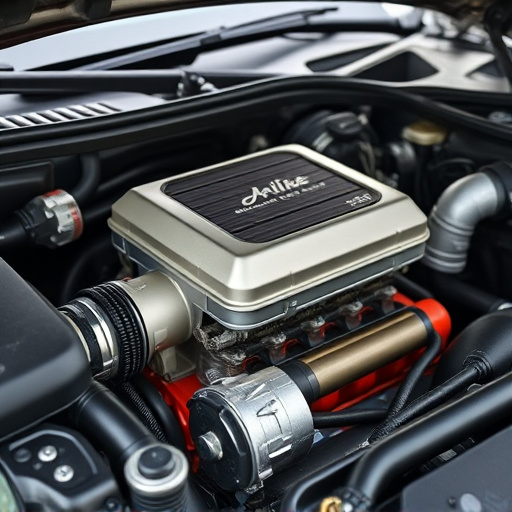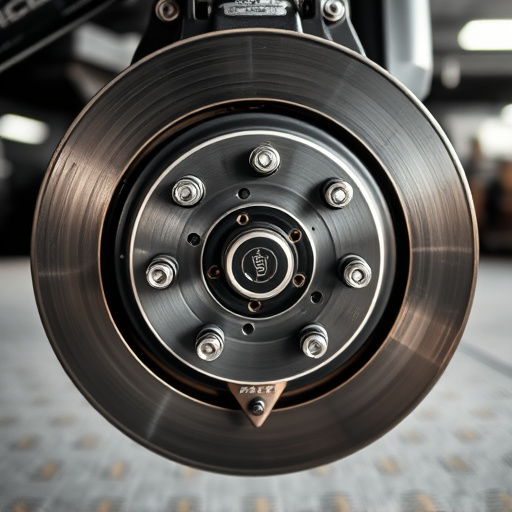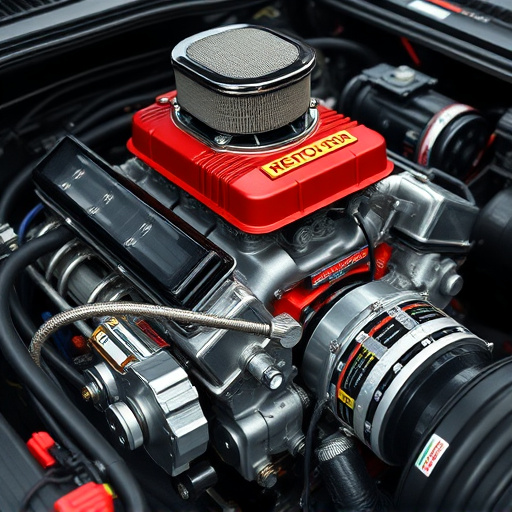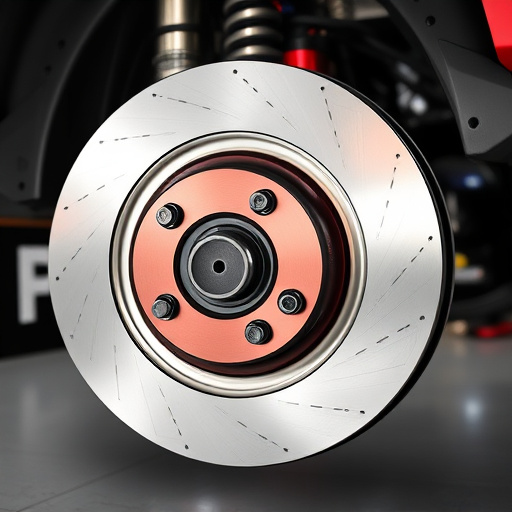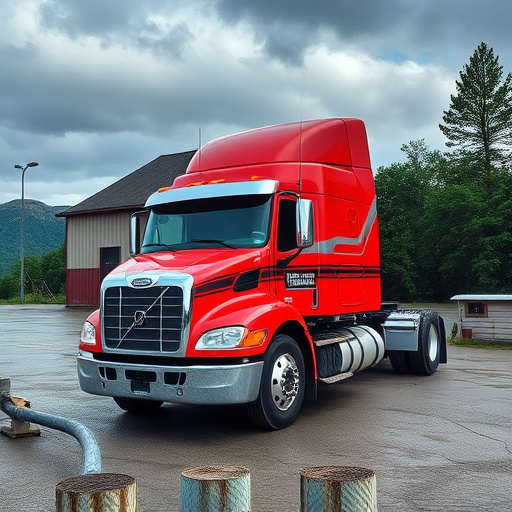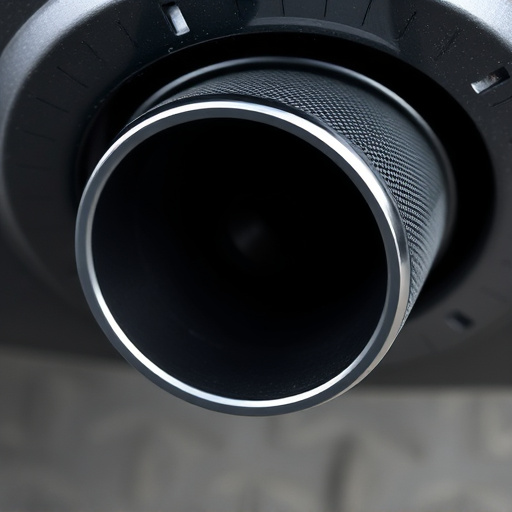Turbo wastegates, vital components in turbocharged vehicles, regulate exhaust gas flow for stable boost levels and enhanced engine performance. They manage backpressure, ensure optimal turbine speed, and facilitate efficient air-fuel mixture intake, resulting in increased power output. Modern turbo wastegate systems use advanced materials and technology to offer superior performance under diverse driving conditions, improving acceleration and drivability while minimizing fuel wastage.
“Unleashing powerful engine performance while maintaining efficiency is a delicate balance, and this is where turbo wastegates play their crucial role. These innovative components are essential for optimizing engine boost in vehicles equipped with turbocharged engines. In this article, we delve into the inner workings of turbo wastegates, explore how they regulate boost for maximum efficiency under load, and uncover the advanced design features that make modern turbo wastegate systems such game-changers. Understanding these mechanisms is a testament to the ongoing revolution in automotive engineering.”
- Understanding Turbo Wastegates: Their Role in Engine Performance
- How Wastegates Regulate Boost for Optimal Efficiency Under Load
- Advanced Design Features of Modern Turbo Wastegate Systems
Understanding Turbo Wastegates: Their Role in Engine Performance

Turbo wastegates play a crucial role in enhancing engine performance, especially in vehicles equipped with turbocharged engines. These components are designed to manage the flow of exhaust gases, allowing for efficient and stable boost levels under various driving conditions. By regulating the exhaust backpressure, turbo wastegates ensure optimal turbine speed and efficiency within the turbocharger. This, in turn, facilitates better intake of air and fuel mixture, resulting in increased power output and improved overall engine performance.
In high-performance vehicles, where demand for power is constant, especially during acceleration or heavy loads, a well-functioning turbo wastegate becomes even more critical. It helps maintain consistent boost pressure, preventing sudden drops that could hinder acceleration. Furthermore, modern turbo wastegates incorporate advanced materials and designs to withstand extreme temperatures and pressures, ensuring reliable operation alongside other high-performance parts such as exhaust mufflers and intake components.
How Wastegates Regulate Boost for Optimal Efficiency Under Load

Turbo wastegates play a pivotal role in regulating boost pressure within an engine’s air intake system, ensuring optimal performance and efficiency under heavy load conditions. Acting as a sort of valve, they control the flow of exhaust gases from the turbocharger, thereby managing the amount of air entering the engine. When engine demand is high, the wastegate opens to relieve pressure on the turbo, preventing overboosting which can damage components. This precise regulation allows for a smoother power delivery and enhances overall efficiency, especially during sustained acceleration or climbing steep grades.
By modulating boost pressure, the turbo wastegate works in conjunction with intake components and cat-back exhaust systems to achieve a balanced flow of air and fuel mixture into the engine. This coordination ensures that the engine receives the ideal amount of compression for efficient combustion, maximizing power output while minimizing fuel wastage.
Advanced Design Features of Modern Turbo Wastegate Systems

Modern turbo wastegate systems boast advanced design features that ensure optimal performance and efficiency under various driving conditions. Unlike traditional wastegates, these cutting-edge mechanisms employ sophisticated sensors and control modules to precisely regulate exhaust flow, resulting in improved engine response and power delivery. By dynamically adjusting the wastegate position based on engine load, speed, and other parameters, these systems maintain a stable boost pressure, enhancing both acceleration and overall drivability.
One key innovation is the integration of variable geometry technology, which allows the wastegate to change its configuration mid-cycle. This dynamic adjustment ensures that the turbocharger operates within an ideal range, maximizing power output while minimizing the risk of overspinning or underperforming. Furthermore, advanced materials and manufacturing techniques contribute to improved durability and reliability, addressing a common concern associated with earlier turbocharger designs. These enhancements not only extend the lifespan of the turbo wastegate but also reduce the likelihood of unexpected failures, enhancing overall vehicle performance and driver satisfaction.
The modern turbo wastegate system, with its advanced design features, plays a pivotal role in enhancing engine performance and fuel efficiency. By intelligently regulating boost pressure under load, these systems ensure stable power delivery, maximizing both acceleration and overall driving experience. Understanding the functionality of turbo wastegates is key to appreciating their crucial contribution to the efficient and robust operation of turbocharged engines.








